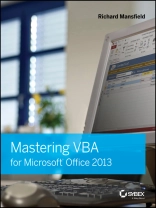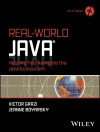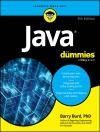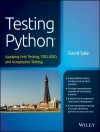A unique, comprehensive guide to creating custom apps with
VBA
Automating computing tasks to increase productivity is a goal
for businesses of all sizes. Visual Basic for Applications (VBA) is
a version of Visual Basic designed to be easily understandable for
novice programmers, but still powerful enough for IT professionals
who need to create specialized business applications. With this
invaluable book, you’ll learn how to extend the capabilities of
Office 2013 applications with VBA programming and use it for
writing macros, automating Office applications, and creating custom
applications in Word, Excel, Power Point, Outlook, and Access.
* Covers the basics of VBA in clear, systematic tutorials and
includes intermediate and advanced content for experienced VB
developers
* Explores recording macros and getting started with VBA;
learning how to work with VBA; using loops and functions; using
message boxes, input boxes, and dialog boxes; creating effective
code; XML-based files, Active X, the developer tab, content
controls, add-ins, embedded macros, and security
* Anchors the content with solid, real-world projects in Word,
Excel, Outlook, Power Point, and Access
Covering VBA for the entire suite of Office 2013 applications,
Mastering VBA for Microsoft Office 2013 is mandatory
reading.
Spis treści
Introduction xxix
Part 1 * Recording Macros and Getting Started with VBA
1
Chapter 1 * Recording and Running Macros in the Office
Applications 3
Chapter 2 * Getting Started with the Visual Basic Editor
31
Chapter 3 * Editing Recorded Macros 65
Chapter 4 * Creating Code from Scratch in the Visual Basic
Editor 87
Part 2 * Learning How to Work with VBA 107
Chapter 5 * Understanding the Essentials of VBA Syntax
109
Chapter 6 * Working with Variables, Constants, and
Enumerations 125
Chapter 7 * Using Array Variables 147
Chapter 8 * Finding the Objects, Methods, and Properties
You Need 171
Part 3 * Making Decisions and Using Loops and Functions
197
Chapter 9 * Using Built-in Functions 199
Chapter 10 * Creating Your Own Functions 235
Chapter 11 * Making Decisions in Your Code 255
Chapter 12 * Using Loops to Repeat Actions 277
Part 4 * Using Message Boxes, Input Boxes, and Dialog
Boxes 305
Chapter 13 * Getting User Input with Message Boxes and
Input Boxes 307
Chapter 14 * Creating Simple Custom Dialog Boxes 329
Chapter 15 * Creating Complex Forms 399
Part 5 * Creating Eff ective Code 449
Chapter 16 * Building Modular Code and Using Classes
451
Chapter 17 * Debugging Your Code and Handling Errors
481
Chapter 18 * Building Well-Behaved Code 511
Chapter 19 * Securing Your Code with VBA’s Security
Features 525
Part 6 * Programming the Offi ce Applications
547
Chapter 20 * Understanding the Word Object Model and Key
Objects 549
Chapter 21 * Working with Widely Used Objects in Word
877
Chapter 22 * Understanding the Excel Object Model and Key
Objects 615
Chapter 23 * Working with Widely Used Objects in Excel
641
Chapter 24 * Understanding the Power Point Object Model and
Key Objects 879
Chapter 25 * Working with Shapes and Running Slide Shows
677
Chapter 26 * Understanding the Outlook Object Model and
Key Objects 697
Chapter 27 * Working with Events in Outlook 719
Chapter 28 * Understanding the Access Object Model and Key
Objects 739
Chapter 29 * Manipulating the Data in an Access Database
via VBA 763
Chapter 30 * Accessing One Application from Another
Application 785
Chapter 31 * Programming the Offi ce 2013 Ribbon 813
Appendix * Th e Bottom Line 847
Index 889
O autorze
Richard Mansfield is the author or coauthor of 45 books, including Visual Basic 6 Database Programming For Dummies, Office 2003 Application Development All-in-One Desk Reference For Dummies, How to Do Everything with Second Life, and Programming: A Beginner’s Guide. He is the former editor of Compute! magazine. Overall, his books have sold more than half a million copies worldwide and have been translated into 12 languages.












